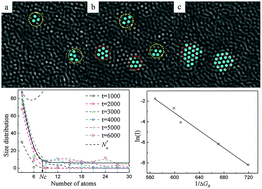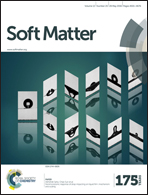Interfacial free energy adjustable phase field crystal model for homogeneous nucleation
Abstract
To describe the homogeneous nucleation process, an interfacial free energy adjustable phase-field crystal model (IPFC) was proposed by reconstructing the energy functional of the original phase field crystal (PFC) methodology. Compared with the original PFC model, the additional interface term in the IPFC model effectively can adjust the magnitude of the interfacial free energy, but does not affect the equilibrium phase diagram and the interfacial energy anisotropy. The IPFC model overcame the limitation that the interfacial free energy of the original PFC model is much less than the theoretical results. Using the IPFC model, we investigated some basic issues in homogeneous nucleation. From the viewpoint of simulation, we proceeded with an in situ observation of the process of cluster fluctuation and obtained quite similar snapshots to colloidal crystallization experiments. We also counted the size distribution of crystal-like clusters and the nucleation rate. Our simulations show that the size distribution is independent of the evolution time, and the nucleation rate remains constant after a period of relaxation, which are consistent with experimental observations. The linear relation between logarithmic nucleation rate and reciprocal driving force also conforms to the steady state nucleation theory.


 Please wait while we load your content...
Please wait while we load your content...